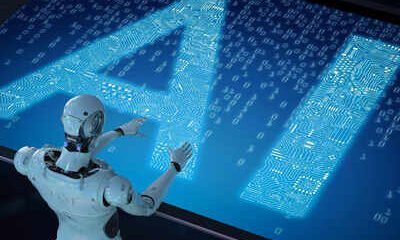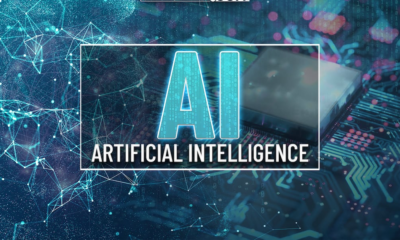Tools & Platforms
Behind the World’s First AI-Native Telco Platform with Circles’ Gaurav Tandon

The world’s first AI-native telco platform is here. In late August, global technology company Circles announced a landmark global collaboration with OpenAI to build a fully AI-native SaaS platform aimed at enabling operators worldwide to unlock deeper consumer intelligence, operational productivity, customer support excellence, and profitability. The partnership combines Circles’ expertise in digital telco innovation with OpenAI’s cutting-edge research, setting the stage for a new generation of AI-powered experiences for consumers and operators alike. The platform will debut in Singapore, powering Circles.Life’s app, before scaling to Circles’ global telco partners.
A shared vision
As part of the new platform, Circles will combine its deep consumer understanding and operator expertise with OpenAI’s industry-leading models to showcase the potential for AI in text, voice, image and vision.
Reflecting on why OpenAI was the partner of choice for this project, Gaurav Tandon, VP of Product & AI Innovation at Circles, points to a fundamental alignment in values and ambition. “Our partnership with OpenAI was a result of a shared common vision, values and technical DNA,” he says. “OpenAI is a global leader in AI research and has pioneered the rapid advancement and adoption of AI amongst consumers and enterprises over the past decade. Both Circles and OpenAI have a strong track record of pushing the boundaries of technology application and share a common vision for using technology to fundamentally reimagine entire industries from the ground up. Both companies have been disruptors in their respective fields and believe in rapid innovation to maintain a first mover advantage.”
This multi-year collaboration will also give Circles access to OpenAI’s early-stage models and research programs, positioning Circles at the forefront of inventing new AI benchmarks for the telco industry. Gaurav shares what this means for the company, explaining, “The possibilities of AI applications are evolving at a rapid pace and access to OpenAI’s early stage research allows Circles to showcase the potential of AI in the telco industry and build a first mover advantage by co-creating this platform with OpenAI. Circles is building fully AI-native BSS systems which power hyper-personalized agentic experiences for telco subscribers and unprecedented levels of efficiency and profitability for telco operators.”
Additionally, Gaurav highlights how this falls into Circles’ broader ambitions, elaborating, “Circles has been at the forefront of technology adoption, starting with the first digital telco through Circles.Life in Singapore and then creating a fully digital SaaS platform for digital transformation of telcos globally. With OpenAI’s research and technology, Circles aims to take this to the next level by fundamentally re-imagining digital connectivity in the AI era. Most legacy telcos and telco vendors are embedding AI, if at all, into existing legacy systems, which only provides marginal gains to legacy data and architecture issues. That’s why we’re building a fully AI-native telco platform from the ground up.”
Personalization at scale
By tapping on OpenAI’s latest technology, Circles aims to radically transform consumers’ digital experiences as well. The AI-native platform is set to power a pathbreaking agentic AI app that understands context, adapts to users’ digital lifestyles and delivers personalized experiences across connectivity, shopping, travel, gaming, wellness and more.
Gaurav tells us what this means for users, explaining, “Over the past two years, we’ve seen a clear shift: consumers are no longer satisfied with one-size-fits-all products. They’re demanding personalization, convenience, and experiences that fit their lifestyle — and they’re willing to pay for it. Circles is integrating OpenAI’s agent architecture with our proprietary data intelligence platform to create adaptive and agentic experiences for telco subscribers. With this new platform and app architecture, telco subscribers will experience a hyper-personalized and fluidic app journey, starting from tailor-made plans during onboarding and usage-based personalization of plans to seamless AI-powered app navigation and personal AI concierges to take actions on their behalf. Users no longer have to be satisfied with off-the-shelf products when they can have their own personal telco and digital lifestyle app.”
He highlights, “At Circles, understanding our users is core to everything we build. We pay deep attention to customer feedback and look at how they actually use the product, to figure out what really matters to them.”
Beyond connectivity
For Circles, the partnership with OpenAI is more than just a one-time collaboration — the two companies are excited to explore various other frontiers in AI for telecoms, building off their mutual synergies and capabilities. “Our partnership with OpenAI is a multi-year collaboration and we’ll continue pushing the boundaries of the AI-native platform in line with AI advancements in the industry,” Gaurav affirms. “So, this is not a single product collaboration. Stay tuned for more announcements in the future as we release more AI-native products.”
Gaurav reflects on this promise, concluding, “Telcos are at the core of everything users do in their digital journeys, yet telcos have been laggards in innovating to improve the digital experiences of users. At Circles, we’re building a telco platform that transforms telcos to technology platforms powering more than just connectivity. Through our solutions like XploreAI, Zerofy, Circle of Joy and Jetpac, we’re building global ecosystems of integrated partners across commerce, content, gaming, fintech, wellness, travel and more, enabling seamless digital journeys and unbeatable value for users and partners. With our AI advancements, we’re now evolving these ecosystems into personal AI concierges that adapt and act on users’ behalf, taking value and convenience to unprecedented levels for users and partners.”

Redefining the telco model
Circles’ collaboration with OpenAI may be aimed at transforming telco experiences for Circles.Life users first, but its ambitions are global. By building a fully AI-native platform — and opening that platform to telco partners worldwide — Circles hopes to prove a new model for operators: one where AI drives personalization, efficiency and new revenue streams across commerce, content and services. If successful, the move could redefine what it means to be a telco in an AI-first world.
Tools & Platforms
Is AI Threatening Your Job Security? Tips to Safeguard Your Career in the Age of Automation

Key Takeaways
- AI is rapidly automating roles in customer service, data entry, programming, content creation, and analysis-heavy jobs across finance, law, and medicine.
- The most at-risk jobs are those with repetitive, rules-based, or entry-level tasks.
- Human-centric skills like judgment, empathy, and creativity remain in demand.
The rapid rise of artificial intelligence (AI) is reshaping the workplace faster than most people realize. What started with automating back-office tasks and customer service roles has now expanded into programming, legal research, financial analysis, and even creative fields such as writing and design. Experts predict that by 2030, up to 30% of U.S. jobs could be automated, with as many as 300 million jobs globally at risk because of AI and related technologies.
As AI tools become smarter and more accessible, the line between human and machine work is blurring—and the pressure to adapt is mounting. If you’ve noticed your workflow getting “smarter” or your company talking more about efficiency than expertise, you’re not imagining things. The age of AI-driven disruption has arrived, and it’s rewriting the rules of the workplace worldwide.
Which Jobs Are Most At Risk from AI?
The first wave of AI automation swept through customer service, data entry, and routine administrative work, said Dima Gutzeit, CEO of LeapXpert, a New York-based tech vendor that provides modern business communication tools with AI capabilities.
Now, he said, even roles in software development, content creation, finance, law, and medicine are being reshaped by code-writing engines, AI copywriters, and data-crunching models. Entry-level and repetitive positions are especially vulnerable, as AI excels at handling foundational tasks that once helped early-career professionals gain a foothold.
A June 2025 study by the Federal Reserve Bank of Dallas argued that most claims for what AI will do are “speculative” at this point. Indeed, many—including the World Economic Forum—have argued that the jobs AI produces will far outnumber those it renders redundant—170 million versus 90 million, respectively.
Nevertheless, the jobs most at risk from language-modeling AI include clerks, administrative assistants, and certain teaching positions. The telltale signs your job could be next? Your daily workflow starts to feel more software-driven, tools gain “AI-powered” features, and management talks about “co-pilots” and “automated insights.” If your responsibilities are becoming more about overseeing software than applying your unique skills, it’s time to take action.
While AI is rapidly transforming the workplace, experts agree that the best way to stay relevant is to focus on the qualities that make us uniquely human.
Here are some strategies to avoid being replaced by AI:
1. Demonstrate Your Humanity
AI can process data, but it can’t replicate judgment, empathy, or ethical decision-making. “What sets you apart isn’t your ability to process data—it’s your ability to interpret it, communicate it, and act on it,” Gutzeit told Investopedia. Employers are increasingly valuing creativity and abilities that remain stubbornly human, like relationship-building and nuanced communication.
2. Become an AI Power User
Don’t just fear the new tools, master them. Learn how to use AI platforms relevant to your field, from prompt engineering in content creation to AI-driven analytics in finance. The fastest learners today will be tomorrow’s leaders. Experiment with AI, critique its output, and figure out how to make it work for you.
3. Automate the Repetitive, Focus on the Unique
Identify the mechanical parts of your job and automate them, freeing up time for higher-value work.
“Strip the mechanical from your day so you can invest in the interpersonal-relationships, storytelling, negotiation,” Gutzeit said. The more you focus on tasks AI can’t do, the more secure your position becomes.
4. Upskill Continuously
Stay ahead by regularly updating your technical and soft skills. Pair AI literacy with human-centric strengths: Combine analytics with storytelling, or prompt engineering with leadership. The best opportunities will go to those who can bridge the gap between algorithmic speed and human nuance.
5. Watch Industry Trends and Pivot Early
Monitor which roles and industries are being automated, and be proactive about moving into areas where human expertise is still essential. Look for companies that use AI to amplify, and not replace, human value.
“Professionals who understand that partnership create more value than either humans or machines can deliver alone,” Gutzeit said.
The Bottom Line
AI isn’t just coming for your job; it’s already transforming the workforce. But the future belongs to those who adapt early, master new tools, and double down on the skills that make us human. It’s important to stay curious, proactive, and relentlessly focused on value. You can turn the AI revolution into an opportunity instead of a threat.
Tools & Platforms
Jared Kushner launches AI startup with top Israeli tech entrepreneur

Coming to light after operating secretly since 2024, the company raised $30 million in a Series A round led by Kushner’s Affinity Partners and Gil’s Gil Capital, with backing from prominent investors like Coinbase CEO Brian Armstrong, Stripe founder Patrick Collison and LinkedIn co-founder Reid Hoffman. Brain Co. aims to bridge the gap between large language models like GPT-5 and their practical application in organizations.
The venture began in February 2024 when Kushner, Gil, and former Mexican Foreign Minister Luis Videgaray met to address challenges large organizations face in integrating AI tools. Kushner, seeking to expand Affinity’s AI investments, connected with Gil, a former Google and Twitter executive turned venture capitalist, through his brother, Josh Kushner.
Videgaray, who met Kushner during Trump’s 2016 campaign, also joined. Brain Co. has secured deals with major clients like Sotheby’s, owned by Israeli-French businessman Patrick Drahi and Warburg Pincus, alongside government agencies, energy firms, healthcare systems and hospitality chains.
With 40 employees, Brain Co. collaborates with OpenAI to develop tailored applications. A recent MIT study cited by Forbes found that 95% of generative AI pilot programs failed in surveyed organizations, highlighting the gap Brain Co. targets.
CEO Clemens Mewald, a former AI expert at Google and Databricks, explained, “So far, we haven’t seen a reason to only double down on one sector. Actually, it turns out that at the technology level and the AI capability level, a lot of the use cases look very similar.”
He noted similarities between processing building permits and insurance claims, both requiring document analysis and rule-based recommendations, areas where Brain Co. is active.
Kushner, who founded Affinity Partners after leaving the White House, said, We’re living through a once-in-a-generation platform shift,” Kushner said in a press release. “After speaking with Elad, we realized we could build a bridge between Silicon Valley’s best AI talent and the world’s most important institutions to drive global impact.”
Affinity manages over $4.8 billion, primarily from Saudi, Qatari and UAE funds. In September 2024, Brain Co. acquired Serene AI, bringing in experienced founders. While Kushner will serve as an active board member, Gil said he will primarily operate through Affinity.
Tools & Platforms
How Alibaba builds its most efficient AI model to date

A technical innovation has allowed Alibaba Group Holding, one of the leading players in China’s artificial intelligence boom, to develop a new generation of foundation models that match the strong performance of larger predecessors while being significantly smaller and more cost efficient.
Alibaba Cloud, the AI and cloud computing division of Alibaba, unveiled on Friday a new generation of large language models that it said heralded “the future of efficient LLMs”. The new models are nearly 13 times smaller than the company’s largest AI model, released just a week earlier.
Despite its compact size, Qwen3-Next-80B-A3B is among Alibaba’s best models to date, according to developers. The key lies in its efficiency: the model is said to perform 10 times faster in some tasks than the preceding Qwen3-32B released in April, while achieving a 90 per cent reduction in training costs.
Do you have questions about the biggest topics and trends from around the world? Get the answers with SCMP Knowledge, our new platform of curated content with explainers, FAQs, analyses and infographics brought to you by our award-winning team.
Emad Mostaque, co-founder of the UK-based start-up Stability AI, said on X that Alibaba’s new model outperformed “pretty much any model from last year” despite an estimated training cost of less than US$500,000.
For comparison, training Google’s Gemini Ultra, released in February 2024, cost an estimated US$191 million, according to Stanford University’s AI Index.
Alibaba says its new generation of AI foundation models heralds the “the future of efficient LLMs”. Photo: Handout alt=Alibaba says its new generation of AI foundation models heralds the “the future of efficient LLMs”. Photo: Handout>
Artificial Analysis, a leading AI benchmarking firm, said Qwen3-Next-80B-A3B surpassed the latest versions of both DeepSeek R1 and Alibaba-backed start-up Moonshot AI’s Kimi-K2. Alibaba owns the South China Morning Post.
Several AI researchers attributed the success of Alibaba’s new model to a relatively new technique called “hybrid attention”.
Existing models face diminishing returns on efficiency as input lengths increase because of the way AI models determine which inputs are the most relevant. This “attention” mechanism involves trade-offs: better attention accuracy leads to higher computational expenses.
Those costs compound when models handle long context inputs, making it expensive to train sophisticated AI agents that autonomously execute tasks for users.
-

 Business2 weeks ago
Business2 weeks agoThe Guardian view on Trump and the Fed: independence is no substitute for accountability | Editorial
-
Tools & Platforms1 month ago
Building Trust in Military AI Starts with Opening the Black Box – War on the Rocks
-

 Ethics & Policy2 months ago
Ethics & Policy2 months agoSDAIA Supports Saudi Arabia’s Leadership in Shaping Global AI Ethics, Policy, and Research – وكالة الأنباء السعودية
-

 Events & Conferences4 months ago
Events & Conferences4 months agoJourney to 1000 models: Scaling Instagram’s recommendation system
-

 Jobs & Careers3 months ago
Jobs & Careers3 months agoMumbai-based Perplexity Alternative Has 60k+ Users Without Funding
-

 Podcasts & Talks2 months ago
Podcasts & Talks2 months agoHappy 4th of July! 🎆 Made with Veo 3 in Gemini
-

 Education2 months ago
Education2 months agoVEX Robotics launches AI-powered classroom robotics system
-

 Education2 months ago
Education2 months agoMacron says UK and France have duty to tackle illegal migration ‘with humanity, solidarity and firmness’ – UK politics live | Politics
-

 Podcasts & Talks2 months ago
Podcasts & Talks2 months agoOpenAI 🤝 @teamganassi
-

 Funding & Business3 months ago
Funding & Business3 months agoKayak and Expedia race to build AI travel agents that turn social posts into itineraries

















